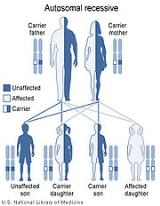
Urocanic aciduria
Encyclopedia
Urocanic aciduria, also called urocanate hydratase deficiency or urocanase deficiency, is an autosomal recessive metabolic disorder caused by a deficiency of the enzyme
urocanase. It is a secondary disorder of histidine
metabolism.
histidine, when catalyzed by the enzyme histidase, forms urocanic acid
. Disruptions in this pathway, caused by a deficiency of histidase, is the underlying cause of histidinemia
. This results in reduced levels of skin and serum
urocanic acid, the primary indicator of insufficient histidase activity.
In urocanic aciduria, increased urocanic acid in the urine
indicates a deficiency of the enzyme urocanase. This enzyme breaks down urocanic acid, forming formininoglutamic acid, and also forms imidazolonepropionic acid from trans-urocanic acid.
With normal to only slightly elevated levels of histidine present in the liver during urocanic aciduria, the only true metabolic indicator of the disorder can be found in the urine.
have been reported with the disorder, no definitive neurometabolic connection has yet been established.
 Urocanic aciduria has an autosomal recessive
Urocanic aciduria has an autosomal recessive
inheritance pattern, which means the defective gene is located on an autosome
, and two copies of the gene - one copy inherited from each parent - are required in order to be born with the disorder. The parents of an individual with an autosomal recessive disorder both carry one copy of the defective gene, but are usually not affected by the disorder.
Enzyme
Enzymes are proteins that catalyze chemical reactions. In enzymatic reactions, the molecules at the beginning of the process, called substrates, are converted into different molecules, called products. Almost all chemical reactions in a biological cell need enzymes in order to occur at rates...
urocanase. It is a secondary disorder of histidine
Histidine
Histidine Histidine, an essential amino acid, has a positively charged imidazole functional group. It is one of the 22 proteinogenic amino acids. Its codons are CAU and CAC. Histidine was first isolated by German physician Albrecht Kossel in 1896. Histidine is an essential amino acid in humans...
metabolism.
Pathophysiology
The amino acidAmino acid
Amino acids are molecules containing an amine group, a carboxylic acid group and a side-chain that varies between different amino acids. The key elements of an amino acid are carbon, hydrogen, oxygen, and nitrogen...
histidine, when catalyzed by the enzyme histidase, forms urocanic acid
Urocanic acid
Urocanic acid is an intermediate in the catabolism of L-histidine.-Metabolism:It is formed from L-histidine through the action of histidine ammonialyase by elimination of ammonium....
. Disruptions in this pathway, caused by a deficiency of histidase, is the underlying cause of histidinemia
Histidinemia
Histidinemia, also referred to as histidinuria, is a rare autosomal recessive metabolic disorder caused by a deficiency of the enzyme histidase. Histidase is needed for the metabolism of the amino acid histidine.-Diagnosis and symptoms:...
. This results in reduced levels of skin and serum
Blood test
A blood test is a laboratory analysis performed on a blood sample that is usually extracted from a vein in the arm using a needle, or via fingerprick....
urocanic acid, the primary indicator of insufficient histidase activity.
In urocanic aciduria, increased urocanic acid in the urine
Urine
Urine is a typically sterile liquid by-product of the body that is secreted by the kidneys through a process called urination and excreted through the urethra. Cellular metabolism generates numerous by-products, many rich in nitrogen, that require elimination from the bloodstream...
indicates a deficiency of the enzyme urocanase. This enzyme breaks down urocanic acid, forming formininoglutamic acid, and also forms imidazolonepropionic acid from trans-urocanic acid.
With normal to only slightly elevated levels of histidine present in the liver during urocanic aciduria, the only true metabolic indicator of the disorder can be found in the urine.
Symptoms
Urocanic aciduria is thought to be relatively benign. Although aggressive behavior and mental retardationMental retardation
Mental retardation is a generalized disorder appearing before adulthood, characterized by significantly impaired cognitive functioning and deficits in two or more adaptive behaviors...
have been reported with the disorder, no definitive neurometabolic connection has yet been established.
Genetics

Recessive
In genetics, the term "recessive gene" refers to an allele that causes a phenotype that is only seen in a homozygous genotype and never in a heterozygous genotype. Every person has two copies of every gene on autosomal chromosomes, one from mother and one from father...
inheritance pattern, which means the defective gene is located on an autosome
Autosome
An autosome is a chromosome that is not a sex chromosome, or allosome; that is to say, there is an equal number of copies of the chromosome in males and females. For example, in humans, there are 22 pairs of autosomes. In addition to autosomes, there are sex chromosomes, to be specific: X and Y...
, and two copies of the gene - one copy inherited from each parent - are required in order to be born with the disorder. The parents of an individual with an autosomal recessive disorder both carry one copy of the defective gene, but are usually not affected by the disorder.

